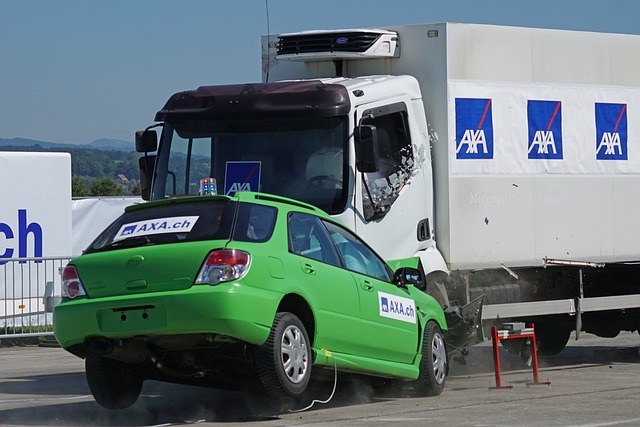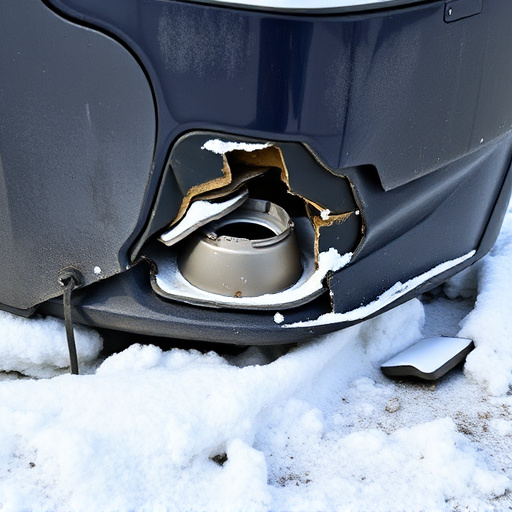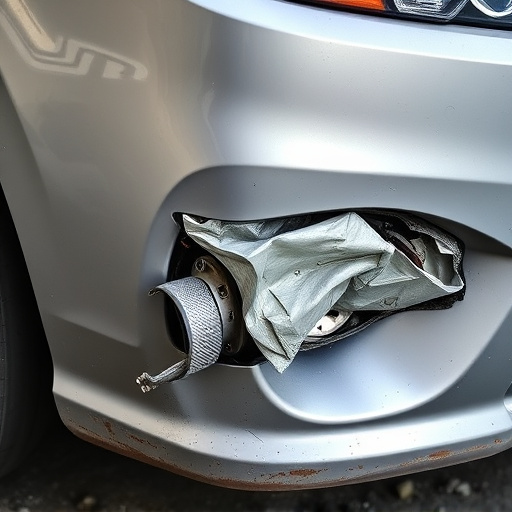Airbag safety certification is a stringent process ensuring automotive airbag systems meet critical safety standards throughout their lifecycle. This involves rigorous crash testing, evaluation protocols, and quality control for design, manufacturing, installation, and maintenance. Key metrics like impact speed and energy absorption are tested through advanced technology, maintaining safety for new vehicles and repairs alike. Proper documentation and record-keeping are vital for demonstrating compliance and facilitating swift issue resolution during inspections.
Airbag safety certification is paramount in ensuring passenger protection. To achieve valid certification, rigorous standards must be met throughout the process. This article breaks down the key components, focusing on understanding the certification requirements, crash testing and evaluation, quality control, and documentation integrity. By adhering to these essential standards, automotive manufacturers can ensure their airbags provide optimal safety in the event of a collision.
- Understanding Airbag Safety Certification Requirements
- Key Standards for Crash Testing and Evaluation
- Ensuring Quality Control and Documentation Integrity
Understanding Airbag Safety Certification Requirements

Airbag safety certification is a critical process ensuring that automotive airbag systems meet stringent safety standards. To gain valid certification, manufacturers and repair shops must adhere to comprehensive requirements outlined by regulatory bodies. These regulations cover every aspect of an airbag’s lifecycle, from design and manufacturing to installation and maintenance. Understanding these certifiable standards is paramount for both car manufacturers involved in automotive repair and restoration specialists ensuring safe vehicle conditions.
The process involves rigorous testing protocols to verify the proper functioning of airbags under various conditions. This includes evaluating deployment speed, occupant protection, and system reliability. Moreover, certification programs mandate clear documentation and record-keeping practices for each step of production and repair, especially in car body repair processes where airbag integration is crucial. Meeting these standards not only guarantees vehicle safety but also provides consumers with peace of mind, knowing their well-being is protected by reliable airbag systems.
Key Standards for Crash Testing and Evaluation

Airbag safety certification is a stringent process that hinges on meticulous crash testing and evaluation protocols. These standards are designed to ensure that airbags deploy effectively and safely in various collision scenarios, protecting occupants across different vehicle types. The key metrics include impact speed, angle, and energy absorption capabilities, which must be rigorously tested to validate the system’s performance.
In terms of evaluation, advanced sensors and computer simulations play a crucial role in analyzing the airbag’s deployment time, inflation pressure, and overall effectiveness. These tests are often conducted using specialized equipment that mimics real-world crash conditions, such as frontal, lateral, and roll impacts. Ensuring these standards are met not only for new vehicle models but also during repairs, like those for a Mercedes Benz or car dent repair, is paramount to maintain airbag safety certification across the entire automotive lifecycle.
Ensuring Quality Control and Documentation Integrity

Maintaining rigorous quality control and meticulous documentation integrity are paramount in airbag safety certification programs. Every step of the process, from component manufacturing to final assembly, must adhere to stringent industry standards designed to ensure the optimal performance and reliability of airbags in the event of a collision. This involves implementing robust testing protocols, employing advanced inspection technologies, and establishing comprehensive quality assurance systems.
Proper documentation is equally vital. Accurate records detailing every stage of production, testing, and validation are essential for demonstrating compliance with airbag safety certification requirements. These documents not only serve as a historical reference but also facilitate traceability, enabling quick identification and resolution of any potential issues that may arise during the certification process or subsequent field inspections, including car scratch repair scenarios where damage is minimal and doesn’t compromise structural integrity.
Airbag safety certification is a multifaceted process that ensures vehicles meet stringent standards for passenger protection. By adhering to key standards in crash testing, evaluation, quality control, and documentation integrity, manufacturers can effectively mitigate risks and enhance overall vehicle safety. Understanding these requirements is essential for navigating the complex landscape of airbag safety certification programs, ultimately contributing to safer roads for everyone.














